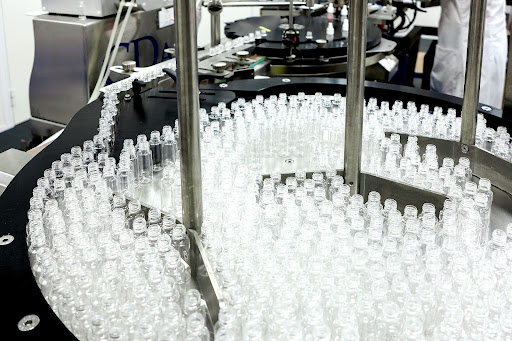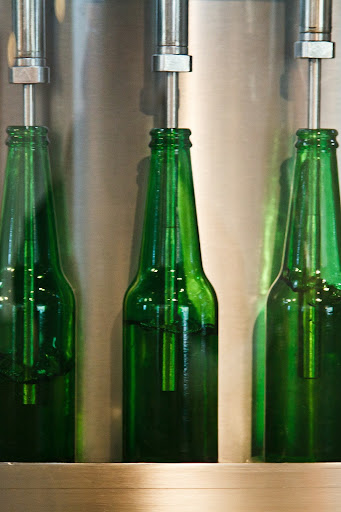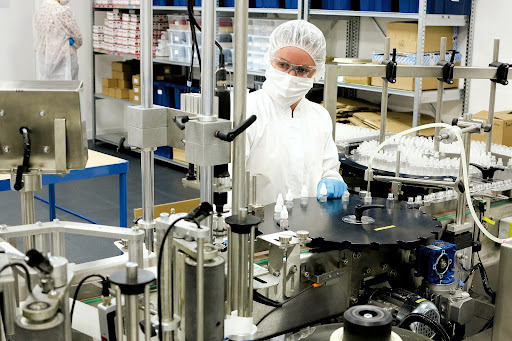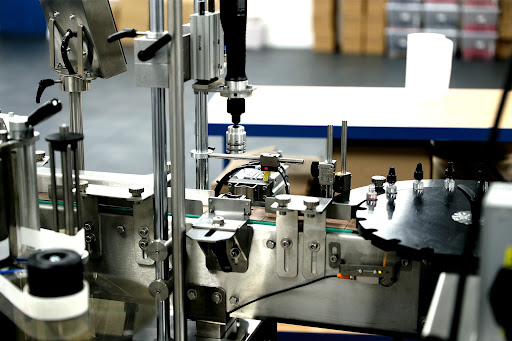When you invest in a bottle capping machine, you want to ensure that it’s always running as new. Optimum performance not only gives you peace of mind but also helps your business make more profits.
Therefore, routine maintenance practices are necessary for any type of capping machinery. Extended neglect of your equipment is a counterproductive business practice. Neglected machines will perform at a fraction of their full capacity and eventually come to a halt. This can be disastrous for your production line as it invites unnecessary downtimes and significant revenue losses.
However, bottle cappers are relatively easy to maintain and can serve you for a long time if you are diligent in maintenance protocols. In an increasingly competitive business environment, your business can’t afford to have frequent breakdowns. Besides, your customers deserve a consistent supply of products.
Regardless of the model you have in your production line, there are various things you can do to make sure the machine is running smoothly. Here’s how to ensure the smooth operation of your capping equipment.
Bottle Capper Maintenance for Smooth Operation
Most of the time, keeping your capping equipment in its maximum running condition feels like a daunting full-time job. But it is a vital practice if you want your manufacturing business to maintain maximum profitability over the long term. Time equals money in the manufacturing industry that depends on an on-site production line.
Therefore, having the appropriate spare parts at hand is of utmost importance. Should any equipment issues arise or a looming breakdown be detected during routine maintenance, the technical team can fix the problems quickly. This ensures you avoid any delays that can cost you money and inconvenience customers.
With the advancements in modern technology, manufacturing businesses can benefit immensely and realize optimum profitability. However, it can also sometimes go wrong. Failure or delays in maintaining capping systems in your production line eventually results in disastrous breakdowns. And even when the machines don’t fail instantly, the speed and productivity will be subpar.
Regular maintenance of capping equipment and any accessories means that your production processes will continue as smoothly as planned. Any time a machine breaks down on a production line, it costs you money.
Ignoring appropriate maintenance procedures can be one of the grave mistakes that a production manager can commit. However, bottle sealing equipment is relatively easy to maintain.
Ensure the Machine and the Work Environment Are Clean
Proper ventilation and dust extraction systems are some of the most critical parts of any production line. And because bottle capping often deals with food, there are strict regulations on air quality in the production space.
However, a clean environment is not just crucial for food installations. If there are dust particles in the plant, the particles can accumulate in the screw capping machine and interfere with its efficiency over time.
Similarly, auto or manual capping machines should be kept clean. With periodic cleaning, you can prevent unnecessary downtimes. Moreover, dirty machines can be unpleasant to work with, and accumulated debris and dirt can mask serious problems that hamper optimum operation.
And it doesn’t need to be complicated. Doing a simple cleaning routine at the end of each work cycle will keep bigger problems at bay.
Understand the Parts List and Use Genuine Spares
Bottle sealing machine parts will eventually wear down from constant use. To ensure that the equipment is working at its optimum potential, you should know that most parts will need regular replacement to avoid partial or total failure.
When this happens, it can hamper the output of your production line and disrupt regular workflow. If this occurred, it would inhibit the production line and disrupt your workflow. Therefore, machine parts should be changed by trained personnel or a certified technician.
After buying your automatic or manual bottle capping machine, the dealer should provide a list of recommended spare parts. Ideally, the list should have categories based on wear and tear potential to help you plan and manage your parts inventory. For example, the parts can fall into the following categories:
- High wear parts –parts with a short lifecycle or have a longer lead time.
- Medium wear parts –parts with a longer life cycle, but they may fail eventually.
- Low wear parts –parts that are unlikely to fail.
Stock Enough High-Wear Spare Parts
Once you understand all the equipment parts you require for a specific capping equipment model, you should make arrangements to ensure you stock the parts which are likely to fail. Most importantly, you should ensure the parts have precise calibration for the exact model. Also, they should suit the intended application. For instance, the parts should be treated to make them suitable for your manufacturing environment.
Ideally, you should stock enough high wear parts on your premises. As a business, you don’t want to wait for a part to be delivered as your operations stall. Typically, whenever your production stalls, your business loses money.
Also, resist the temptation to use knockoff parts in place of genuine ones. While some people may do this to cut costs, your automatic bottle capping machine will end up breaking down faster and can also void your warranties.
Correct System Configurations
Even with stringent maintenance practices and machine upgrades, things can occasionally go wrong in the production line.
Typically, production lines are automated to maintain optimum operational standards and maintain consistent production. Regardless, you may still experience errors with the capping equipment feeder system and usually stemming from the following issues:
- Wrong conveyer and component operating speeds
- Bad seals and closures
- Delivery system misalignment
Whenever any of these issues arise, there will be errors in the capping process.
1. Wrong Component and Conveyer Belt Operating Speeds
This is among the common issues with bottle capping equipment and stems from the wrong speeds between the conveyor and other components. For example, a spindle capper uses gripper belts to fasten bottles in place and therefore requires constant sync between the gripper belts and the conveyor. Any discrepancy between the two components eventually leads to insufficient sealing.
Similarly, snap cappers rely on harmonized speeds between the gripper and snap belts. Equipment operators should check and adjust the speeds to ensure smooth working and solve issues with missed caps.
2. Bad Seals and Closures
Besides ensuring the correct alignment, it’s vital to look out for bad seals or closures. Ideally, the bottle changeover often needs height adjustment to match the capper.
Primarily, height adjustment controls gripper belts, spindle wheels, chucks, or other parts. And if any component loses its ideal settings, you can experience uncapped bottles, loose caps, and cross threads.
3. Check the Chute
Most automatic production line bottle cappers rely on a chute to deliver caps to bottles for proper sealing. The chute places a cap on each bottle, and missed caps often result from cross-threaded or crooked closures.
For the equipment to maintain smooth operation, always ensure the chute system aligns perfectly with the capper. First, you need to check the positioning of your cap delivery equipment since even a tiny nudge can cause misalignment and sealing errors.
Plant operators should check for alignment and smooth transition of the chute fingers holding the caps for bottles along the line. In most cases, solving this problem only requires you to readjust alignment.
Adhere to Recommended Preventive Maintenance Schedule
Preventive maintenance is the most critical aspect of ensuring the optimum performance of your automatic capping machine. And just like a vehicle, a packaging machine needs regular and periodic maintenance to ensure peak equipment performance.
After installing a rotary capper machine, you should create and adhere to a preventive maintenance schedule. The maintenance schedule prevents minor and major breakdowns that can lead to unexpected downtimes. Some preventive maintenance tasks often require an advanced level of technical know-how and should be done by a certified technician.
1) Preventive Lubrication
The machine operator is responsible for taking care of all the moving parts of the bottle cap tightener machine. All the moving parts should have enough lubrication using the recommended lubricant specified in the user manual. When a user neglects preventive lubrication, any defect that stems from friction can void the warranty cover.
2) Regular Machine Inspection
Regular and thorough inspection of your equipment is necessary to ensure a long lifespan of the machine. When a problem is detected early enough, you can be sure of quick and less costly fixes. On the other hand, the longer a problem stays undetected, the higher the repair costs, even when the issue was initially minor.
A routine inspection ensures your machine maintains production accuracy and works as new. Most importantly, it saves you from hefty repair costs and unplanned breakdowns.
3) Autonomous Maintenance Tasks
Autonomous maintenance tasks are done by trained machine operators instead of professional technicians. These tasks often involve simple visual cues. After the machine operators get acquainted with the workings of the equipment and carry out consecutive maintenance tasks, it becomes easy to detect looming problems without a technician.
Typically, the operators use a maintenance checklist to perform daily, weekly, biweekly, and monthly activities.
This practice has various benefits, including:
- Higher machine availability: Self-maintenance improves machine availability, thus reducing unscheduled downtime and improving production.
- Lower equipment maintenance costs –autonomous maintenance can reduce maintenance costs significantly while keeping production overheads low.
- Reduces the risks of accidents –when your packaging machine is in excellent working condition, the chances of accidents in the plant are lower hence boosting operator confidence.
4) Partner With Experienced and Responsive OEM
When your capping machine breaks down, every minute is critical. Ideally, it is prudent to do your due diligence before buying your packaging equipment. Ensure you vet the OEM and learn all the details regarding their technical support and availability, responsiveness, and associated costs.
The best manufacturer has a dedicated customer service department where a real person will answer your call or respond to communication in a personalized way. Also, they should have remote capabilities to access the equipment and troubleshoot basic issues, thus saving you from unnecessary costs associated with on-site visits.
The aftermath of the Pandemic has strongly demonstrated the need for superior remote service capabilities. This means responsive OEMs have already embraced some form of remote diagnostic methods. While others will access the machine’s mainframe remotely, others will use video conferencing tools to guide your on-site technical team through complex troubleshooting tasks.
5) Select the Right Machine
When shopping for a handheld capping machine for your production line, you need to ensure you choose the appropriate equipment. Ideally, you need to consider your production needs and future expansions.
Similarly, if you’ve been running a production line for a while, you may start to feel dissatisfied with your current equipment. This doesn’t necessarily imply that you have poor machines. Most likely, your business has outgrown your current equipment.
Whichever the case, you should consider your options carefully. Unless you are quite technical, working with a reputable manufacturer is essential. They can guide you when selecting your next bottle sealing system. Of course, the ultimate choice depends on specific aspects of your business.
6) Plan for Important Upgrades and Obsolete Equipment
Inevitably, any bottle sealing equipment requires software and firmware upgrades. And sometimes, it calls for replacement when the entire machine or a particular component becomes obsolete and no longer receives manufacturer support. Today, technology is developing at a staggering speed, and like any other machine, bottle sealing equipment is bound to become obsolete.
Ideally, you should Maintain close communication with equipment manufacturers and vendors to get notified whenever necessary upgrades are available. Similarly, the vendors will inform you when a specific model is set to get phased out. With advanced knowledge, you can plan for essential upgrades and replacements and minimize unpleasant downtimes.
Conclusion
Over the years, technology has become a powerful driving force transforming the manufacturing industry as we know it. Modern bottle capping equipment has become sophisticated and efficient, making the production lines handle high volumes quickly.
As with any production equipment, regular maintenance is essential for ensuring efficient operation. When neglected, cappers will lose optimum efficiency and eventually fail completely. This is unacceptable for any business seeking to maximize profits.
The machine operators ought to regularly check the cappers to ensure perfect alignment with feeders. Also, ensuring speed harmony between different components ensures that the capping system runs smoothly and efficiently.
Most importantly, plant owners should keep an inventory of spare parts that are likely to break. To avoid unnecessary downtime, ensure you have trained staff on-site to make repairs and adjustments when necessary.
Buy Equipment or Ask for a Service
By using Linquip RFQ Service, you can expect to receive quotations from various suppliers across multiple industries and regions.
Click Here to Request a Quotation From Suppliers and Service Providers
Read More on Linquip
- What is Air Pollution? All You Need to Know
- 10 Types of Water Pollution in 2022 + PDF
- Main Solution of Water Pollution in 2022
- 10 Main Causes of Water Pollution in 2022
- What is Water Pollution?






